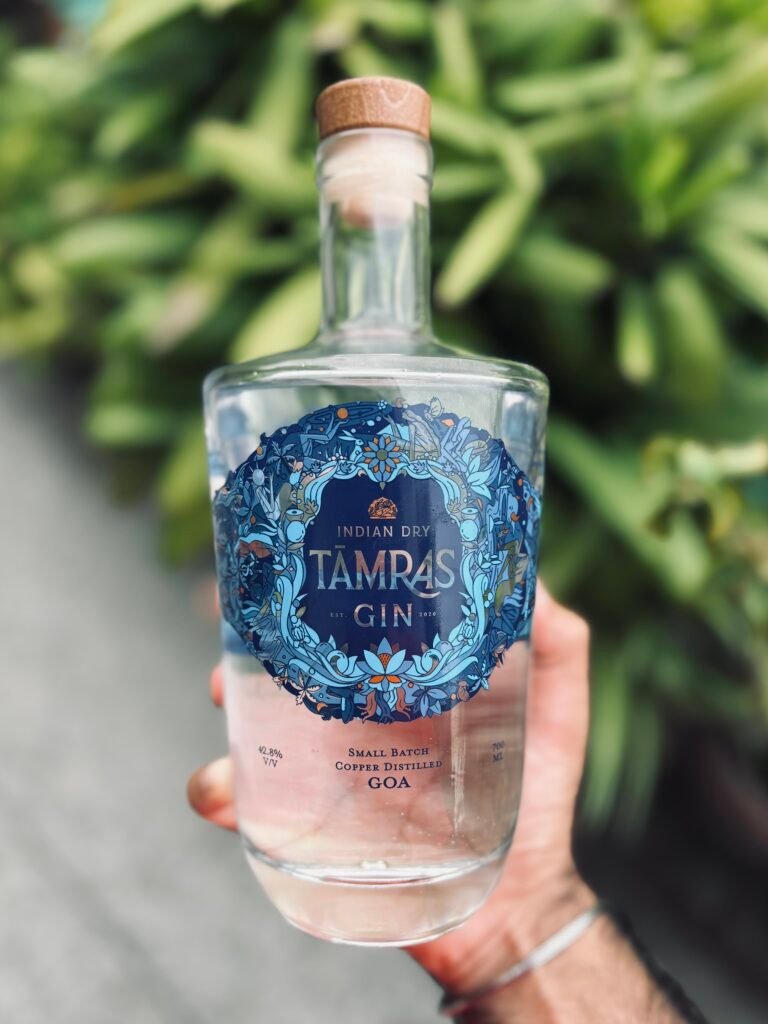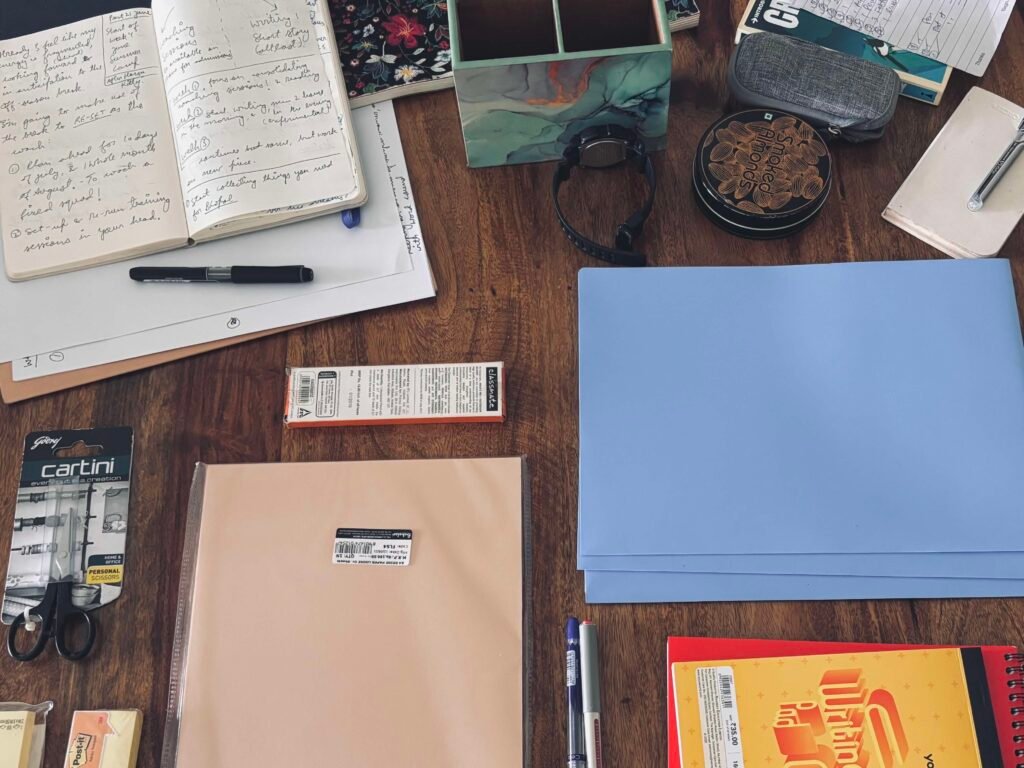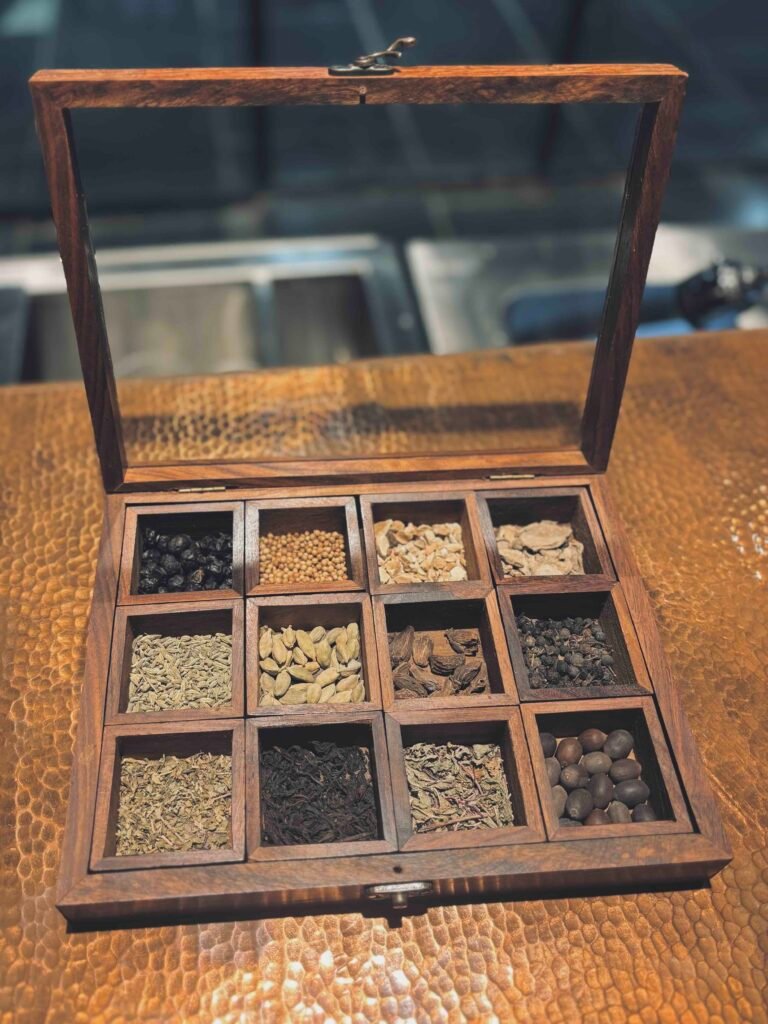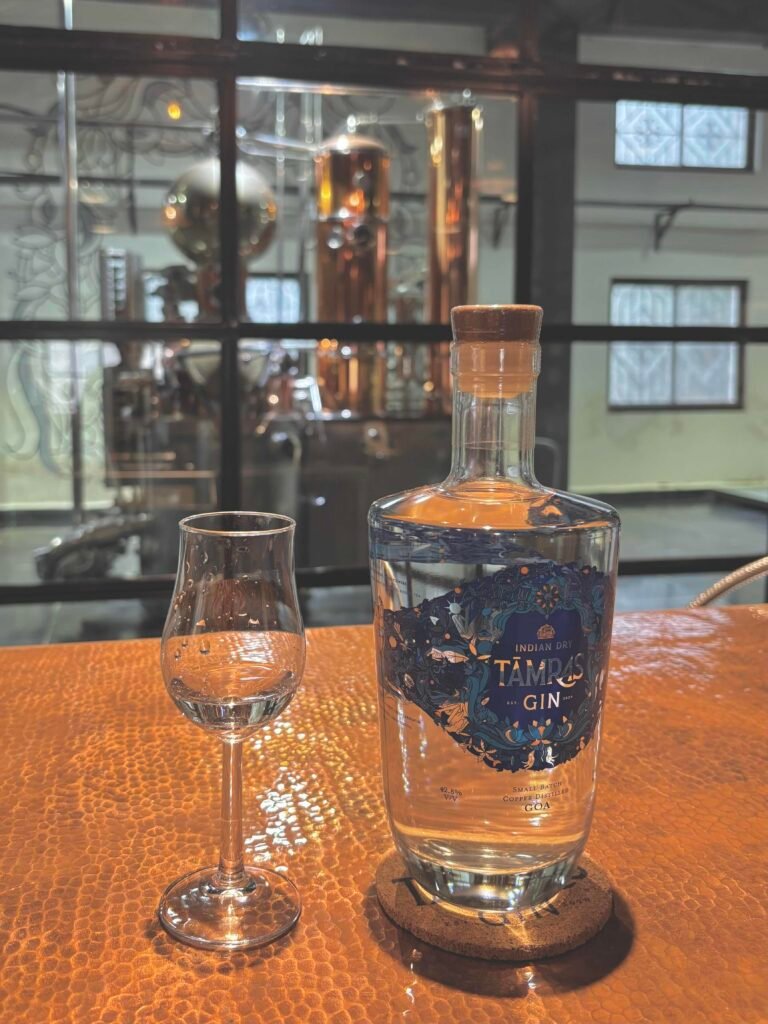Adventure at Adventurist Spirits
july 28 ~ North Goa
word count: 2400
I was having a distracted Saturday afternoon when I got a call from Adventurist Spirits Distillery.
Friday night had gone well: I’d cut off so many tasks off my to-do list that it encouraged me to set grand plans in motion for the next day. I was excited Moody. One of the grand plans I was excited about was to build on a good start to organizing my writing schedule, so that I could have good structure to my days going forward. This would mean that I would have 2 fairly experimental pieces of writing finished, and more in under a week. Another plan on the bulleted list was to visit the Tāmras Gin Distillery, an experience I had booked well in advance, before arriving in Goa.
A month ago, while on a visit to dear family, I had stumbled upon a charming bottle sitting in the middle of a small display of gins in a lesser known wine shop in Panipat, Haryana. I was naturally intrigued. I hadn’t seen this bottle of ‘Indian Dry Gin’ before. My cousin looked at me reading the label and asked, ‘you getting that?’ I tried, but couldn’t say no. I could get a sense of what it would taste like, but it was all speculative. On the way back, I took to my phone, and researched the brand. Not surprisingly, the gin was made in Goa–home to the ‘gin renaissance’ in India, and also to my upcoming ‘creative retreat’. The brand even hosted regular distillery experiences where in you can book a tour, and have a look at their copper distiller in person! In North Goa! Not too far from where I was planning my stay. A moody coincidence had fallen flush onto my lap. Previously, I had loosely acquainted myself with how alcohol was made from Youtube but the chance to see a distillery always excited and evaded me. The words ‘small batch’ and ‘copper distilled’ from the label on the bottle kept echoing in mind. Suddenly, I was seeing a lot of copper. The next day, I booked a slot for two on a distant Saturday evening, loosely inside the dates I would be in Goa for, and made a note in my notebook.
The same note looked back at me wide-eyed, on the productive Friday night. For one, the monsoon rains were a big concern, not because it was pelting down at regular intervals throughout the day, but because I was going to take a scooter all the way to Colvale about 25 kilometres from my apartment. Never would I take a cab, never. Not in North Goa. The worst part was I hadn’t rented a scooter yet. So that went in as a task right under the visit. And then another task–buy a raincoat, or get drenched on the way.

The second reason it looked a bit daunting was I was alone in this. The second ticket turned out to be a waste because the person it was meant for couldn’t make it to Goa. Story of my life! Now, I had another trivial matter to worry about: my clumsy social skills.
Anyhow, I still circled the 5 pm visit to the distillery with excitement, added a prerequisite condition of making the most of the morning, to get at least 2 hours of writing done. ‘MUST FOLLOW’ I wrote in capital letters next to the condition. Content with the plan in place, I went to bed confident about maneuvering the Saturday with ease. As luck would have it, I couldn’t even write for a minute the next day. Maybe due to waking up foggy and doom-scrolling to get out of it, I ended up lazing around till brunchtime, when I got a call from a Mr. Kole.
He was calling from the distillery and asked me to confirm my participation in the experience starting at 5pm. I answered in the affirmative and told him I would be coming alone. ‘In that case, you would be the only one in attendance,’ said the voice. That was enough to set my spiraling sense of productivity into frenzy. I panicked a little, and asked him if it would be possible for me to reschedule the visit, knowing full well I would not go in the future. Mr. Kole didn’t decline the request and asked me to take a minute to decide. But, what would I do alone? Wouldn’t it be a little awkward? I was more nervous than excited now. ‘How long does it last?’ I had to ask something. Mr. Kole didn’t sound bemused. He entertained my rants; perhaps that was enough. ‘I’ll be there at 5,’ I confirmed. As soon as I hung up, a brand new plan to salvage the remains of the afternoon was put in place: SWIMMING. Nothing better than a guilt workout to save the day.
The swim went well. I changed in good time. Time started to feel like it was moving fast, and I was racing against it. Luckily, a scooter guy sat right outside the colony gate. ‘I’ll get you one in a minute. It’s parked someplace else,’ the vendor was quick to point out, showing me the black number plates of the scooters parked around him. ‘These are private. Don’t worry, I won’t be a minute.’ It was 4:30 when he returned. By the time we did the paperwork another 10 minutes passed. I had 15 minutes left to complete the 30 minute trip. It wasn’t looking promising but I was intent on making it to the distillery on time–no turning back now, I punched the location in the map.
A security guard in uniform, sliding open a long black-paneled gate, came out of the facility to instruct me where to park. It was fifteen minutes past 5, and even though I couldn’t buy a raincoat, and luckily it hadn’t rained on the way, I felt dreary from all the wind in my face. He led me in, got me to fill my details in a notebook.
A dude in a black t-shirt wearing specs walked out to receive me. I immediately recognised his voice–it was Mr. Kole from the phone call. He shook my hand and rushed me inside the hut: ‘You’re 15 minutes late.’

Walking past huge, towering stainless steel vessels, and a section on the right that looked like a cage for storing goods, I tried to explain the events of my day as a way of apology. ‘I’m just here to see the copper still,’ I mumbled, following his pace. I felt like I’d entered a spacious museum with black highlights and deliberate lighting. Further ahead lay big white containers that I could see stored liquids with handwritten markings on them, stacked on top of each other next to a forklift. ‘We’re a little short on time,’ Mr. Kole cut me short. ‘We need to hurry up because everything needs to be shut by 6.’
At the centre of the hall lay a long table with around 10 chairs stacked in a row. Mr. Kole asked me to take a seat and took his place at the other side of the bar counter. Behind him, the show-stopper–the copper still shone bright through a glass wall like an ancient submarine, unearthed from the deep sea. The tabletop, to go with the theme, was copper as well, pointed out Mr. Kole, bringing my attention back to the present. There were just the two of us inside the premises, let alone the big table–and somehow, it didn’t seem to matter. I sat back in my chair feeling relieved I’d made the journey.
‘Let’s begin!’
Kole began by introducing himself and his role at the distillery, which was much more than organising the experience as I’d originally suspected–he was the guy in charge, the distillery manager running the show from behind the scenes. In the alcohol industry, I guess he would be referred to as the master distiller, but I’m not sure how the term is used. He didn’t refer to himself as that, so I’m even less sure.
Tāmras’s inception took place in a bar in London, when the brand’s co-founders were overcome with inspiration to make their own gin. The husband-and-wife duo went through months of research, met industry experts from across the world, experimented with endless recipes before settling on a citrus-forward flavour profile for their clear gin, with distinct herby notes. ‘It’s is a sipping gin, we’ll get to that later.’ Kole explained the meaning of the two-part word Tāmras: copper and nectar; I’m not sure I remember correctly. The copper still was made specially keeping the method of distillation in mind. ‘This is an Indian dry gin,’ Kole beamed, his eyes sparkled through the frame of his specs. ‘Not a London dry. There’s a difference!’
‘This is the juniper berry,’ we had moved to the ingredients. ‘Without it no gin in the world can exist,’ Kole emphasised the point with a definitive wave of his hand. He asked me to savour the pea-sized berry with folds on its surface. In front of me lay a box of exotic-looking herbs and botanicals that were sourced from around the world. ‘They are introduced to the distillation process at various stages of production, but these 5 botanicals,’ he pointed to the top row, ‘are the essential ingredients. ‘The rest add flavour, but without these 5, you wouldn’t have gin in the first place.’
We went through all the ingredients. Kole explained what each one did to the flavour and texture of the end-product, and how a small variation in taste would alter the final batch. The next thing I remember… I was plastered, it was dark outside, and it was way past closing time.

After going through the box of ingredients, we did a walking tour of distillery that involved having a close look at the copper still. I was having a lot of questions come up but keeping in mind the shortness of time, I stuck to brevity. From there on to the dilution tanks and bottling. ‘Time to taste the gin,’ we were back at the long table. ‘This is where the magic happens! Remember I told you about sipping gin?’ Kole handed me a shot of Tāmras. I took a sip and instantly felt the hot citrusy flavour, followed by some herbs I couldn’t quite differentiate. ‘Nice, right,’ Kole saw my expression. ‘Now try this one,’ he poured another shot, but in an ice-cold glass. ‘This one is chilled in freezer.’ Immediately the spirit flattened, like it had compressed the flavours so you could hand-pick each note. ‘It tastes like cardamom,’ I shook my head in disbelief. Kole nodded. ‘I can taste… tea leaves?’ I wasn’t sure. Kole smiled, ‘you see what I mean by sipping gin. It’s great with cocktails, and you can have it on its own–just like that, or with ice. Every sip you’ll discover a new note.’ ‘Damn!’ this time I thought I tasted saunf.
We talked about various distilling techniques, gin nomenclature and Indian gin brands. Apparently, Delhi NCR has one of the most thriving cocktails scenes in the country, more than Mumbai. I was surprised when he told me this, but then I hardly go out for cocktails when I’m in Delhi. I’ve only recently moved past beer and whisky as my choice of drinks, I told him. Kole doesn’t take ‘Bourbon’ for an answer if you’re discussing favourite whiskies, not that I said so, he was citing unusual answers he gets sometimes. He emphasized his preference in ‘sipping alcohol’ versus ‘mixer alcohol’. A popular brand of rum I mentioned he insisted is made not from sugarcane, but its by-product, molasses. ‘Molasses, imagine! And yet it’s so famous.’ I told him it was a college obsession and that I’ve not had it in years. ‘Try fenny with Limca in a local bar,’ Kole was adamant about his Goan recommendation.
Kole poured 3 Tāmras cocktails of different flavour profiles- a Negroni, a sweet cocktail with berries and a Martini that could hold a fort together. We were quite tipsy after doing a couple of rounds of taste comparisons when he told me he was a graduate of Manipal, the famous student town on the coast of Karnataka. ‘What?’ I nearly spilled my cocktail. That’s where I went to college. Crazy Coincidence! We must’ve spent a good 40 minutes calling out our favourite spots from memory. He was a few batches after me so we had to adjust timelines to navigate the streets as we remembered them. Originally from Bangalore, he talked about his experiences in college. Naturally, a lot of new places had come up in town after I’d left. I was glad the football field at End Point was still around, along with a couple of my favourite bars, especially Dee Tee. Apparently, there’s a PVR in Manipal now, who would’ve thought. I still get dreams about Manipal, about going there to take exams pending for years, walking around in the rain collecting grace marks with red mud on my sandals, but I didn’t go there.

A bit reluctant, I asked him what the markings on the big white plastic containers meant in a slightly slurry voice. ‘They’re 5 different distillates that come together to make the final gin,’ he sounded glad I asked the question. We got off the table and walked around reading the markings and other details on the labels. Seeing that my curiosity for the process was growing, he took me back to the copper still, this time to explain the inner mechanics involved in separating the ‘liquid mix’ at different boiling temperatures, and how the design ensures you get a clear spirit. The mix goes around the apparatus a few times till you get the condensed distillate, which is collected in a dish, drop by drop, and stored. ‘Simple!’ He said, ‘it’s not very complicated.’ I stood for a moment looking at the bells and whistles of the copper still in awe.
My questions grew, and very patiently, Kole entertained them over another round of cocktails. ‘What are those?’ I pointed to a stainless steel tank. I could see through a window it was dark outside. ‘That’s the dilution tanks used to bring the alcohol content of the final distillate down to about 42%.’ I followed Kole back to the production area, trying to keep pace with him. He counted a total of 4 tanks. ‘They’re all at different stages of dilution. The final gin is bottled from these.’ That called for a Martini.
I told him how I had found a bottle of Tāmras in Panipat, and the first thing I did was remove the ‘For Sale in Haryana’ label. He laughed announcing he was the one who put it there, across the front of the bottle. ‘It’s needed for the Haryana market. You won’t see it in the Goa bottles.’ He pulled up his bottle from the bar. Another label goes at the back, he turned the bottle–’in this rectangle.’ We shook hands on that. Outside, it was dark and quiet. It smelled like monsoon. The guard in uniform slid open the black gate just enough for one person to exit. It had rained in the meantime so he helped me wipe the seat of my scooter dry with a soft cloth.
‘You better buy yourself a raincoat, Mr.’ He went back inside.
